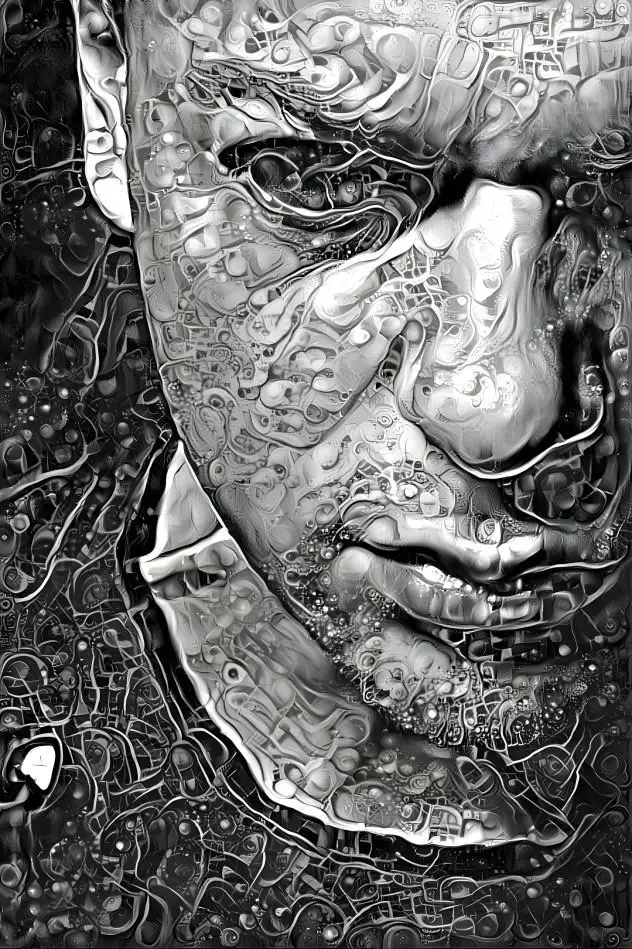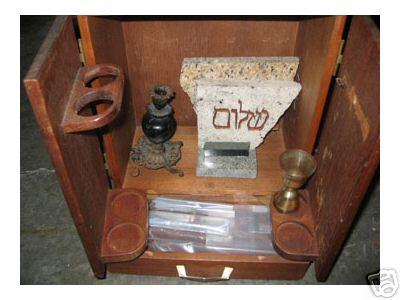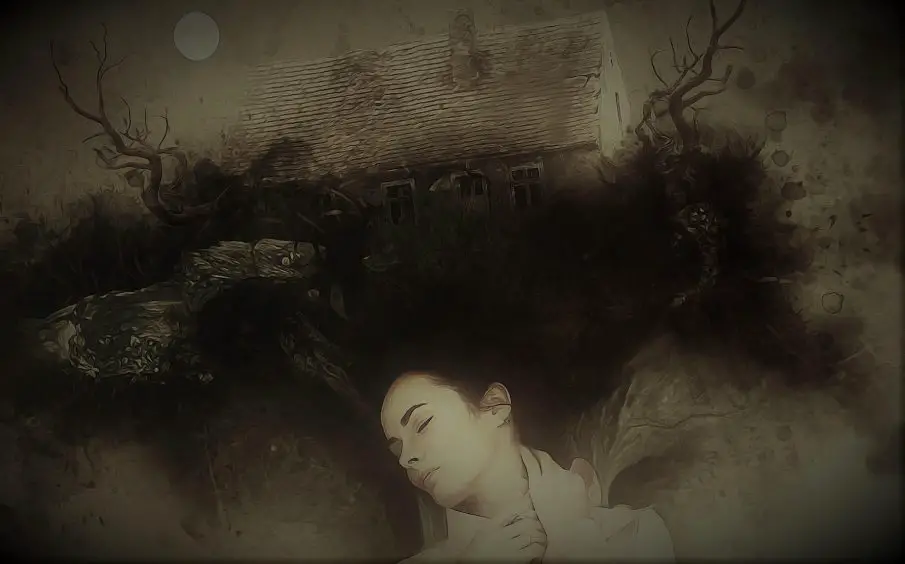Share the Lore!
By: Skylar Black
Body Hauntings – Dybbuks and Soul Possession
When you think of the word “haunted”, what image comes to mind? Most of us think of an abandoned house or Gothic manor – others may think of dolls, landscapes, or even cars.
But what if your body was haunted?
What if a spirit attached itself to you – not your home or possessions, but your soul?
These types of spirits are called dybbuks.
These creatures are described in Jewish folklore as disembodied spirits that are being punished for some worldly wrongdoing by being forced to wander the material world until they can find a safe haven – that is, a safe haven in the form of a living body.
What is a Dybbuk?
A dybbuk (plural dybbukim) is described as a human spirit that attaches itself to the soul of a living human. The reason for this attachment varies – in some tales, an evil or malevolent soul attaches itself to the soul of an innocent in order to feed upon it.
In other tales, an otherwise good spirit attaches itself to the soul of someone who wronged them in life; in these cases, the possession is seen as a punishment for the living person’s wrongdoings.
And, in perhaps the most frightening of these situations, possession by a dybbuk can occur at random. No one is safe…
In terms of symptoms, possession by a dybbuk can manifest in a number of ways. In some situations, it can appear much like demonic possession, with strange behavior on the part of the host.

In other cases, it can manifest more like a case of mental illness – during the 16th and 17th centuries, those who suffered from epilepsy or schizophrenia were often thought to be possessed by dybbuks.
In any case, there are only two known ways to rid yourself of a dybbuk – the first is to help the spirit complete the unfinished business that’s tying it to the material world, or occasionally tying it directly to you.
This solution assumes that the spirit’s unfinished business is easily achievable, or that it even has it at all.
The other method of getting rid of a dybbuk is to have an exorcism performed by a rabbi. While this may be more straightforward, it carries all of the dangers of a traditional exorcism, such as exhaustion or dehydration.
Origins of the Dybbuk
Belief in this type of spirit was most prevalent in 16th-17th century Eastern Europe, though the legends have persisted into modern Judaism as well.
The grounds for this belief were laid by a mystic named Isaac Luria, who created a doctrine known as the transmigration of souls (gilgul). This concept is essentially the belief that the soul is transferred into another living body after death in its endless quest for self-perfection, similar to the Buddhist concept of reincarnation.
While Luria himself was content to stop there, his disciples took the concept of transmigration a step further, believing that souls could enter bodies that were already occupied by another soul, giving birth to the concept of the dybbuk.
The idea is that unfinished business is keeping the dybbuk from continuing its journey towards self-perfection, and thus it uses possession as a tool to solve this problem.

The Strange Case of the Dybbuk Box
While claims of dybbuk possession have declined markedly since the 17th century, there are occasional modern reports of such happenings. The most famous is the case of the “Dybbuk Box”, which first appeared on eBay in 2003.
The box was bought at an estate sale in 2001 by an antique dealer named Kevin Mannis. Mannis claimed that the box’s original owner was a survivor of the Holocaust named Havela that had lived until the age of 103.
He reported that his interactions with the woman’s family were very strange and that they claimed that he should not open the box under any circumstances.
According to Mannis, strange things started happening immediately after he brought the box back to his shop.
The strange scent of jasmine permeated the air around it, and lights in the basement where it was stored mysteriously broke. Further, another employee of the shop reported otherworldly screaming coming from the box.
Despite these strange happenings, Mannis decided to give the box to his mother as a birthday gift shortly before Halloween. According to Mannis, shortly after she received the box his mother experienced a stroke – later, she would attribute this experience to being in the box’s presence.
After over a year of trying to get rid of the box, Mannis successfully auctioned the box off on eBay – after moving through another buyer, the box ended up with Jason Haxton, who paid $280 for it.
Haxton claimed that he didn’t believe the strange stories associated with the box, saying that he was “too science-based.” He also did not heed the warning from the box’s original owner and opened the box.
Inside, he found a goblet, two locks of hair tied with string, pennies dated in the 1920s, a dried rosebud, a small granite statue engraved with gilded Hebrew lettering, and a cast-iron candlestick holder.
Shortly after receiving and opening the cabinet, Haxton claims that he experienced “a tidal wave of bad luck.” Haxton claims that he got very ill shortly after the box arrived and other problems plagued him for months.
Eventually, Haxton said that he consulted with a rabbi, who told him to place the box inside a wooden container lined with gold to “negate” whatever spirit the box contained. Haxton claims to have done this, and then locked the box inside a “military-grade case.”

Haxton also wrote a book about his experiences with the box, entitled “The Dibbuk Box”, which was published in 2011. This book would go on to inspire a film in 2012 called The Possession.
Since the film was released, the Dybbuk Box has been a modern Internet urban legend. Most of the box’s fame has come from ghost hunter Zak Bagans, host of Ghost Adventures. Bagans bought the Dybbuk Box from Jason Haxton in 2016 for an undisclosed sum and placed it in his Haunted Museum in Las Vegas.
Bagans’ antics with the box – including allowing a “curse” to pass from the box to rapper Post Malone in 2018 and opening the box on camera in 2020 – have cemented it in the annals of paranormal lore right alongside artifacts such as Annabelle and Robert the Doll.
During an episode of Ghost Adventures: Quarantine, Kevin Mannis told Zak Bagans that the infamous box is not the only one of its kind – he gave Bagans a second, smaller box and claimed that these two were part of 10 total boxes that were hidden around the globe.
He claimed that the original owner of the box, Havela, was attempting to contact a good spirit to fight against the Nazis during the Holocaust. The dybbuk that she summoned was separated and contained in these 10 boxes, and if they were ever brought together, they would unleash evil upon the world.
According to Mannis, he was originally in possession of 8 of these boxes, two of which he has now passed on to Bagans. The other two have never been found.
Is the Dybbuk Box a Clever eBay Hoax?
Despite its worldwide fame, there are many skeptics who believe that the Dybbuk Box is really a well-executed hoax perpetuated by Kevin Mannis, the author of the box’s original eBay listing.
Mannis has a background in advertising and creative writing, and many believe that the whole story of the box’s origin with an elderly Holocaust survivor was manufactured so that he could sell the box for a higher price.
Earlier this year, Mannis admitted that the entire eBay listing from 2003 was a work of fiction in an interview with a reporter from Input Magazine.
“I am a creative writer. The Dybbuk Box is a story that I created. And the Dybbuk Box story has done exactly what I intended it to do when I posted it 20 years ago.” – Kevin Mannis in an interview with Input Magazine in July 2021
Mannis also admitted that he manipulated the original wine cabinet into the object that is now known as The Dybbuk Box. He says that the carving on the back is his work, and the granite statue found inside is also one of his creations. The locks of hair were taken from a friend of Mannis’ as yet another creepy prop in his story.
Not all of the details in Mannis’ story are false, however – his mother really did have a stroke after receiving the box on Halloween.
Mannis chalks this event up to pure chance and told the reporter that her interview on Paranormal Witness was “an outstanding bit of motherly support and an Oscar-winning performance.”
As for his interviews with Zak Bagans in 2020, Mannis claims that these were his attempts to keep control of the story that he had created. The second box he gave Bagans was also a hoax.
Faith Remains in the Dybbuk Box
Despite this explosive admission, there are many people who still believe that the Dybbuk Box is haunted.
Bizarrely, the largest proponent of this theory is Jason Haxton, who was the third owner of the box and author of The Dibbuk Box. At the end of his book, Haxton says that he believes that Mannis made up the whole story about the Holocaust survivor, but that the Dybbuk Box is still cursed.
According to Jason Haxton, he believes that Kevin Mannis either cursed the box himself using Jewish kabbalah techniques or that he accidentally invited something to inhabit the box by claiming that it was cursed in the first place.
To be clear: Jason Haxton doesn’t buy the origin story that Kevin Mannis assigned to the box, but he does believe that it’s haunted.
Some believe that it’s actually Jason Haxton perpetuating the hoax – he has benefited more from the box’s lore – publishing his book, being involved in the filming of The Possession in 2012, and of course, selling the box to Zak Bagans.
As for Kevin Mannis, he denies Haxton’s claims completely and even states that he has spoken to Haxton in the past, telling him that the box was a hoax. Haxton refused to accept this confession as fact and continued to follow the box and its “haunting.”
Pop Culture References
Alongside The Possession (2012), there are multiple films based on dybbuk lore: The Unborn (2009), A Serious Man (2009), Demon (2015), and Ezra (2017).
Literature hasn’t missed the Dybbuk craze either – there are multiple novels using dybbuks as plot points. Interestingly, the narrator of The Warsaw Anagrams by Richard Zimler is a dybbuk who’s desperately trying to figure out why he’s forced to remain in our world.
The dybbuk has also been selected as the antagonist in a number of TV shows, such as Difficult People (Season 3, Episode 3), Legends of Tomorrow, and even Rugrats.
Resources:
Articles Cinema Journal - The Only ‘I’ in the World: Religion, Psychoanalysis, and “The Dybbuk” Encyclopedia Brittanica - Dybbuk (Jewish Folklore) Input Magazine - Finally, the Truth Behind the “Haunted” Dybbuk Box Can Be Revealed PubMed - Dybbuk-possession as a hysterical symptom: psychodynamic and socio-cultural factors Wikipedia - The Dybbuk Box Documentaries Deadly Possessions - Robert the Doll and the Dibbuk Box Ghost Adventures: Quarantine - Episode 4: Dybbuk Box: The Opening Paranormal Witness - Gifting the Dybbuk Box The Possession - Dybbuk Box Documentary Featurette Films The Dybbuk (1937) A Serious Man (2009) The Unborn (2009) The Possession (2012) Demon (2015) Ezra (2017) Dibbuk (2019) Books Between Worlds: Dybbuks, Exorcists, and Early Modern Judaism by J.H. Chajes (2003) Dybbuks and Jewish Women: in Social History, Mysticism and Folklore by Rachel Elior (2008) The Dibbuk Box by Jason Haxton (2011) The Dyke and the Dybbuk by Ellen Galford (1994) The Dybbuk by S. Ansky (1914) The Warsaw Anagrams by Richard Zimler (2009) Podcasts Morbid: A True Crime Podcast - Episode 182: The Dybbuk Box Unexplained Mysteries - Cursed Objects: Dybbuk Box Don’t Look in the Trees - Episode 4: The Dybbuk Box Mythical Monsters - Dybbuk That’s Spooky - 22 - Pomeranian Watchdog

